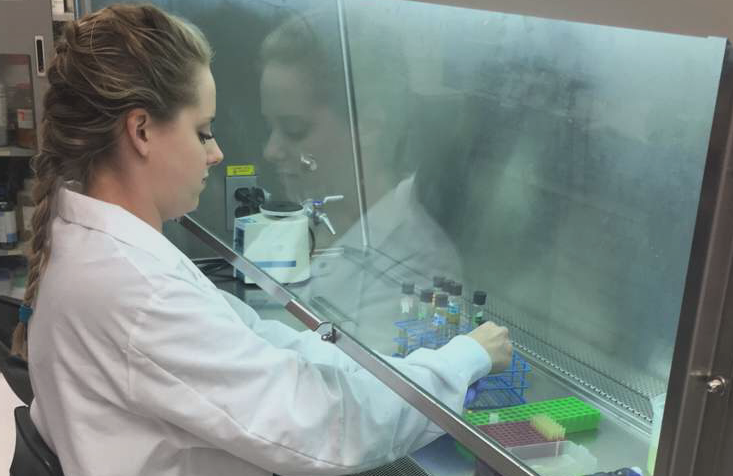Being a Ximbassador at your university can provide you with experiences
of a potential new future career avenue. We spoke to Amanda Zdimal to discover
what her experiences as a Ximbassador at the state university of New York, Binghamton,
involved:
What are you currently studying/ working on?
“I’m currently working on a research project on how bacteria effects heart attacks and stroke in atherosclerosis. 99% of my time is spent on research. Alongside this role I am also a Teaching Assistant for microbiology classes at the university.”

Why did you choose to take part in the Ximbassador Programme?
“I was thinking of exploring technology transfer as a future career route. This internship is not something that is normally offered, so I was intrigued and spoke to the technology transfer representative to get more information. Once I knew I wanted to apply, I spoke to my Principal Investigator (PI). He was absolutely fine with me doing the internship, as long as my main priority was my research. So I went into the internship knowing any time I spent on it would have to be outside my research time.
As it was a really good experience and because I liked the work, I ensured I made time for the Internship. I was happy to work a bit longer some days, as I knew I was benefitting from the experience.”
What was the Internship like?
“I found it quite challenging in the beginning as I didn’t know the answers to the questions the professors asked me, or what the rules for the process were. In the early days I would have to follow up with my Ximbio mentor quite a lot for answers to their questions. They were good at responding quickly. It was interesting finding out about everyone’s research – it’s such a unique experience, being able to visit other departments and finding out about their research projects. I also enjoyed being able to work closely with our technology transfer office, brainstorming ideas on how to approach PIs and which PIs I should contact.”
How did researchers react to the Ximbio concept?
“When describing Ximbio, I tried to tailor my communications to the researcher and make a connection with what they already know. This seemed to work, as most of the researchers I spoke to, were really interested in the concept, even those who had patented their technology in the past and worked with companies to commercialise their research. None of them had worked with something like Ximbio before.”
What skills have you gained from the Internship?
“I’ve definitely improved my communication skills and learnt how to work in an environment that is very different to a laboratory. I’ve learnt a lot about the technology transfer industry and have improved my knowledge on how licensing works. It’s a big learning curve, but you’re well supported by Ximbio throughout.”
What would you say to anyone considering becoming a Ximbassador?
“I was really happy with how the internship turned out and would say to anyone considering becoming a Ximbassador, just do it. It’s a great experience and I’ve learnt a lot from it. You need to be resilient though as sometimes PIs won’t email you back. If you keep following up though, you might get something from it.”
What are you planning on doing after the Internship?
“I still have a few months left as a Ximbassador. I will be doing a presentation for about 20-30 professors in a month, to introduce them to the concept of Ximbio and tech transfer. This will be an interesting and different experience for me. Longer term after the internship I plan to do a Postdoc in academia to keep my options open, as I feel it will be harder to come back into academia after spending time in industry. This internship though has opened some doors for me. If I do decide that tech transfer is the right route for me to take, then this internship provides me with a step up over others, who won’t have had this experience.”
